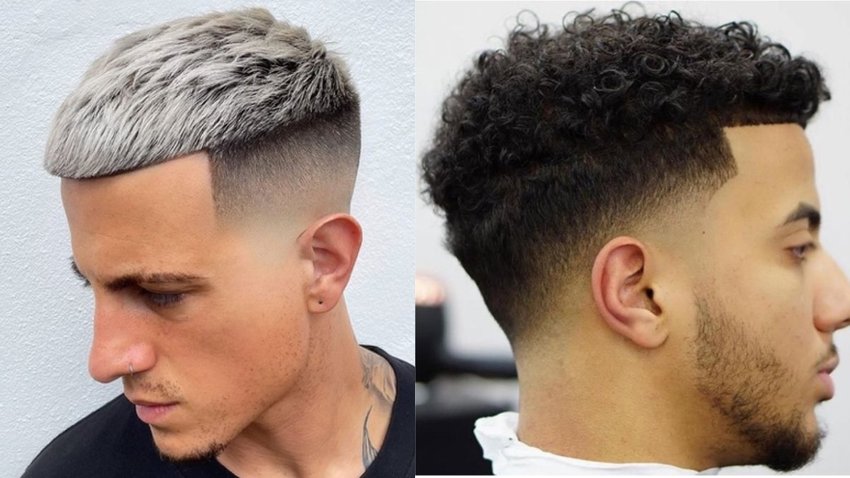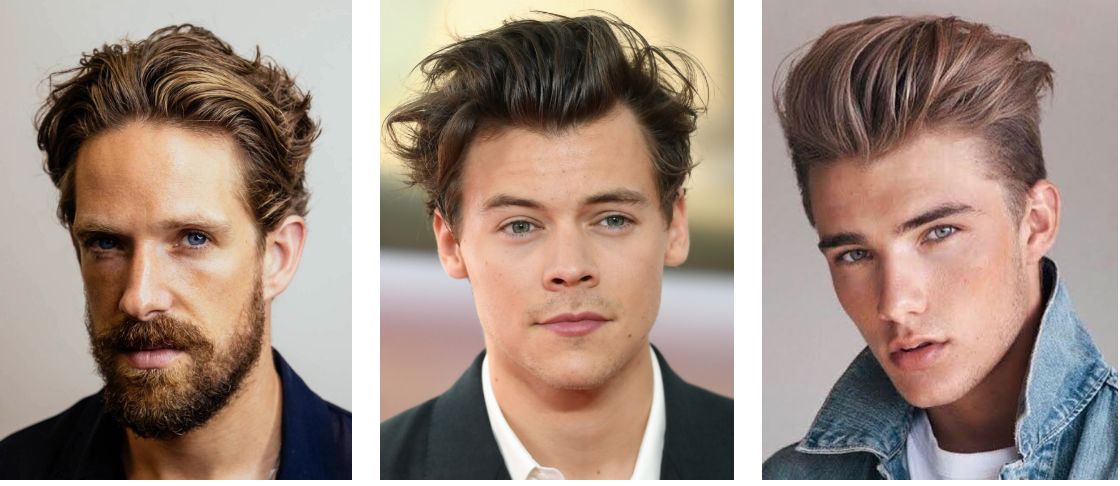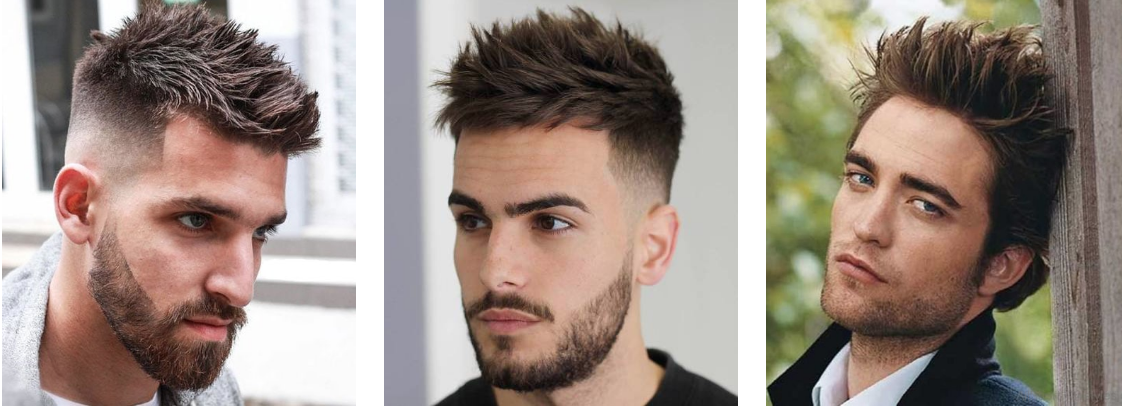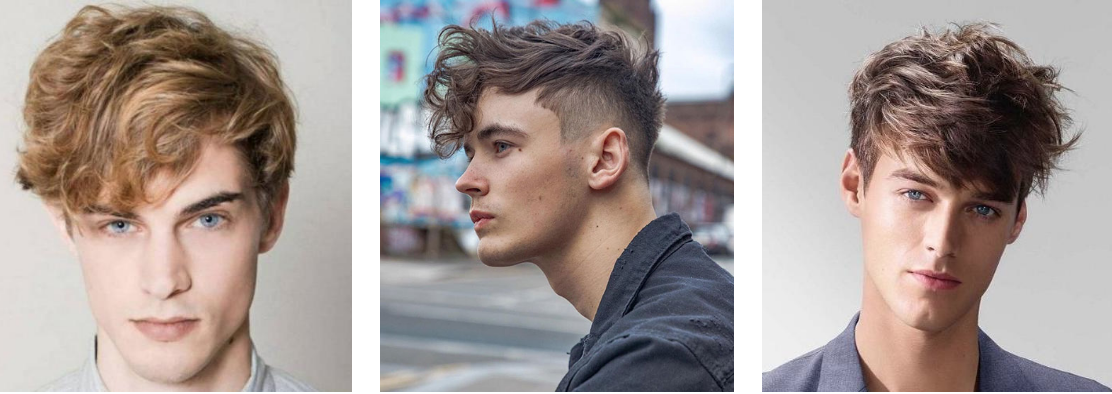|
The massive mullet moment: why the world’s hair is all business in the front – party in the back It’s been bubbling up for a while, but now it seems the hairstyle has reached another tipping point. And no wonder. It’s weird, cool, sexy and liberating. Mullets, it seems, are “back”. Again. In recent years celebrities including Miley Cyrus, Lil Nas X and Rihanna have sported “parties in the back”, while swathes of TikTok users have made videos showing off theirs (the hashtag “mullet” currently has more than 10 billion views on the app). But Paul Mescal, star of Normal People and Aftersun and heart-throb of straight woman everywhere, has somehow tipped the scales and made it official: mullets, once acceptable only for hippies and Australians, can be – and very much are – sexy. Up until about a month ago, I had been wearing my hair in some approximation of a mullet for just over a year. It is now a bit too short at the back to count, which is more a result of my miscommunication with the barber (it was my first time risking a visit to a regular “men’s” barbershop and I panicked) than any real desire to de-mullet. One theory about the mullet comeback is that it is a product of the Covid pandemic, as a result of people who previously had short hair letting it grow out. My own was technically a pandemic mullet, debuting at the end of 2021, just before the Omicron variant had it spending a month mostly tucked inside my dressing gown hood. I’m sure the increase in mullets around me must have spurred on my decision to an extent. But the slightly embarrassing truth is that I had wanted a mullet for a good year or two before I got one. I knew, however, that getting one would make me stick out at my old workplace, and I’ve always let that kind of thing bother me a bit too much. So I waited until I got a job at the tofu-eating Guardian, where everyone was too enlightened (or at least too polite) to be rude about my hair.  Lucy with her mini-mullet. Photograph: Lucy Knight Lucy with her mini-mullet. Photograph: Lucy Knight While I was obviously a big old wuss to let a fear of what people might think get in the way of a haircut, I was not wrong to assume that a mullet would evoke strong reactions. A mullet is in some ways the ultimate “ugly” haircut, mysteriously managing to be weird and cool. Though my parents were predictably unfazed (having previously come out as a lesbian and a vegetarian, I don’t think I can shock them any more) and my close friends predictably complimentary, I did attract some snarky comments from a stranger at a work event: “Is that what the kids are doing now? God help us.” And while my mullet seemed to ward off a fair amount of creepiness from men, some of the sexist remarks simply got exchanged for homophobic ones. Because – and this is worth remembering, now that everyone is doing it – mullets are gay. Drag kings and dykes and queers of all flavours have been mulleting ever since the cut was last officially in fashion. A straight man may now show his barber a picture of Mescal, but only because queer women like me went before him and asked our stylists for a cut like Tegan and Sara’s. It’s the queerness, the androgyny and the general rule-breaking playfulness of a mullet that made me, and presumably many others, want to try one in the first place. And I know it sounds ridiculously cringey to say, but it is a haircut that made me feel free – free of expectations, free to express myself. Those feelings can’t be thwarted by a few nasty comments or raised eyebrows, I realise now. My mullet can’t grow back fast enough. from The Guardian
2/27/2023 What's that on your head...How Wigs are MadeThere are lots of reasons people wear wigs. Some wear wigs due to illness, baldness or as part of their religion. Some like to experiment with new styles or colours. Some wear wigs as part of their job - like actors, judges or even clowns. We know why wigs are worn, but few know how they’re manufactured. Read on to find out how wigs are made. A wig – short for periwig – an old English word for the long, often curly, flowing headpieces worn mainly by men in the seventeenth and eighteenth centuries – is a head covering made of real or artificial hair. They have been worn in one form or another for thousands of years. How wigs are made today differs unrecognisably from wigs made at the dawn of recorded history. Here, you’ll find the answer to the question: how are wigs made? A Short History of Wigs Wigs have been worn since times of antiquity, starting perhaps with the Ancient Egyptians who shaved their heads but didn’t want sunburn. The ancient Assyrians, Greeks and Romans also wore wigs, and the quality of one’s wig was a symbol of wealth and status, hence the modern-day term ‘bigwig’. The richest in ancient Egypt even had wigs made from finely-spun silver! It was reported that Julius Caesar wore a wig to hide his baldness and the use of wigs in Ancient Rome was relatively common. With the fall of the Western Roman Empire around 500 AD, the use of wigs declined and they weren’t widely reported again for another thousand years. Come the sixteenth century and the popularity of wigs returned, thanks largely to royalty. Elizabeth I wore a wig, and the wigs of the French and English kings and nobility were extraordinarily ornate, not to mention very heavy. When considering how wigs were manufactured in the nineteenth century, they required an incredibly complex process of manufacture, meaning they remained available only to the wealthiest in society. Indeed, it wasn’t until the 20th century, in the 1960s, when synthetic wigs became available that they were worn more widely as general fashion items. Today, wig making is a multi-billion pound global industry and here, we’ll answer the question ‘how are wigs made?’ Types of Wigs There are lots of different types of wigs and they can broadly be broken down into four main categories. Monofilament – these wigs are light and durable and they replicate the natural way the hair moves from the scalp. Lace-Front – lace-front wigs are incredibly natural looking and create the illusion of a perfectly natural, albeit hand-constructed, hairline. Hand-Tied – hand-tied wigs can either be synthetic wigs or custom human hair wigs and each hair is sewn to the mesh by hand. They are versatile and very light. Wefted or Open-Cap – This type of wig is usually synthetic and the most affordable. They are perfectly suited to the occasional wearer but aren’t very versatile. Synthetic Synthetic wigs are constructed from man-made fibres such as polyester, nylon or acrylic and they are treated through a number of complex chemical processes to ensure they have the look and feel of natural human hair. The benefits of synthetic wigs is that they come in virtually any colour shade, they retain their style easily and are bought off-the-shelf so they are cheaper than custom human hair wigs. The downsides are that there is little versatility, i.e. you can’t go from straight to curly using the same wig and often can’t be heat-treated. Custom Human Hair Wigs These wigs use human hair with an invisible hairline so they are as realistic-looking as natural hair. They are much easier to customise than a synthetic wig and can withstand treatments from blow dryers, straighteners or curling tongs. They also last much longer than synthetic wigs but are invariably more expensive. How Wigs are Manufactured The process of how custom wigs are made and how synthetic wigs are manufactured is virtually identical and both methods are specialised and complex. First, a master wig maker will measure the client’s head. Then, using a simple method of cellophane and masking tape, they will make a cast of the head that sits on a head-shaped block of wood or canvas. The outline of the cast is drawn onto the block, which is then covered with a fine silk mesh held on with pins. This preparation ensures the final product (which can cost many thousands of pounds for the best quality wigs) is a perfect fit. Preparing the Hair This is the most important aspect in the process of how wigs are made. In consultation with the client, the wig maker will choose the hair to be used and ensure it is all facing in the same direction from the root to the tip, ensuring the cuticles are all intact. Once the wig maker has the hair they need, it’s bound together in bundles and run through a hackle – a kind of upturned comb with very long, pointed needles – to remove short hairs. It’s at this point that the hair is closely inspected for nits. If any are found, the hair is boiled in a solution of acetic acid and combed through with a nit comb, the same way your parents did when there was a nit outbreak at school. The answer to the question ‘how do they make wigs’ is now starting to come together. For synthetic hair wigs, the length of hair is chosen by the client and it goes through the same binding and hackling process as natural hair. Sorting the Style After the hackling, the hair is washed and disinfected and then rinsed through a number of times to remove all shampoo and disinfectant residue. It is then either left to dry naturally or in an oven at around 80°C – 100°C. Some wig makers will hackle the hair again at this point and it’s now that the hair is curled, waved, coloured or styled to the client’s wish. The Knotting How are wigs manufactured? This is now the most important and time consuming element of the whole process. It’s called knotting. The wig maker uses a needle to attach the hair to the base and a professionally-made, full wig from an expert requires up to 40,000 individual knots, all done meticulously by hand. When the wig is complete, a last row of knotting is done to finish the edges and the inside of the wig is treated with a hot iron press to secure each knot in place to prevent any from falling out. Now you know how wigs are made but a more important question for the client is how long does it take to make a wig? Wigs at the affordable end of the scale can take as little as a month, but for the finest quality wigs from the best wig makers in the world, a wait of six months to a year is not unheard of. from Discovery UK With so many men’s and women’s hair products on the market these days it can be difficult to keep track of them all. Most people seem to have a basic understanding of products like gels, pomades, creams, leave-in conditions and why they are used – but what about lesser known products like texture powders and dry shampoos? What’s the purpose of using these products and how can they help me get the hairstyle that I want? Well, hopefully we’ll be able to break the difference between the two hair product types so that it’s simple and easy to understand – having the proper information will help you make the right decision as to whether or not texture powder or dry shampoo should be added to your daily hair care routine.
What is Texture Powder? Texture powder is an incredibly fine, lightweight dry powder that doesn’t have a fragrance and has a tacky feel to it. It’ll leave your hair with a dry, matte finish with a texture that reminds us of cotton candy (that’s probably the best way we can describe it). The main ingredient for most texture powders is silica silylate, which is a type of silica particulate that has unique physical properties. Its rough, jagged edges allow it to effectively bind to the hair shaft and create a sort of friction between them. What’s great about these powders is that they are so effective at binding to the hair that only a little amount is needed to get the desired volume effect. What is the Purpose of Texture Powder? Several men’s hairstyles (and women too) require a lot of volume in their hair to get the right look. For certain hair types (particularly those with finer hair) creating and holding volume throughout the day is extremely difficult. Finer hair tends to lay flat and lifeless so an added boost is needed. Using the texture powder as a pre-styler is one of the best options for providing that initial volume to your hairstyle. Note that sometimes these texture powders are called boost powders, texturizing powders, or volumizing powders but their overall purpose is the same - to instantly give extra oomph to your hairstyle. How Does Texture Powder Work? Apply the texture powder by sprinkling it specifically at the roots or all over your head in a fine dusting – just make sure you cover any section of hair that you want to add volume. Spread it around with your fingertips to ensure there isn’t a high concentration of it within one location and to ensure even coverage (you don’t want to see any white clumps due to too much powder in one place). The product will add a sort of friction to your hair, so don’t be too rough or you’ll feel like you’re pulling your hair out. Using a scrunching method is recommended if running your fingers through it is too difficult. What you’ll instantly notice is that your hair will feel thicker and have greater volume than ever before - this is due to the silica effectively binding to the hairs together causing it to stack vertically on top of itself rather than falling flat. Essentially, this sort of friction allows the individual hairs to “support” each other vertically which results in volumized hair, and prevents the hairs from sliding past each other and laying flat. What is the Purpose of Dry Shampoo? The other dry product that seems to be super popular (and a little misunderstood) is dry shampoo. They are typically alcohol or starch-based products that come in three forms: a dry powder, an aerosol spray, or in a liquid. Dry shampoos are sometimes seen as a complete substitute for wet washing your hair – this couldn’t be further from the truth. You still need to shampoo and condition your hair and scalp on a regular basis to remove excess oil, dirt, debris in order to keep it healthy and clean. But if you are looking to freshen up your look at the end of the day or even lengthen the time between washes, then dry shampooing your hair might be a good option. While dry shampoos do not actually clean your hair and scalp, they do temporarily make your hair feel less oily and greasy by soaking up excess oil that tends to weigh down your hair. How Do You Use Dry Shampoo? Apply the dry shampoo to any oily, greasy section of your hair particularly the roots. If using an aerosol dry shampoo, keep the canister about 6” away while spraying to prevent too much dry shampoo from collecting in one area (comb or brush any areas where too much is added to evenly spread it around). The dry shampoo will effectively soak up the oil in the hair resulting in a refreshed look without all of the hassle of washing, conditioning, blow-drying, etc. What are Alternatives to Dry Shampoo? In the past, many home remedies for dry shampoos existed and they consisted of things like talcum powders, starches, clays, and vegetable powders. But with the resurgence of these products, companies have found ways to put those natural ingredients into an aerosol so that you can apply them more evenly without over-doing it. Final Thoughts It’s obvious that these two products are quite different, and they are definitely items you should consider adding to your hair arsenal. Texture Powder is great for adding volume to your hair which is perfect for men and women whose hair tends to lay flat. While Dry Shampoo is an excellent choice for those who need to freshen up without having to go through a shower routine to make their hair look great. Either way, try them out for yourself and see what you think. from Mister Pompadour More men are embracing their hair's natural texture, and they're looking for styles that help compliment it. Here, styling tips that help emphasize facial angles and multi-dimensional texture on three popular looks.  French Crop For a clean-cut, modern haircut that stands out, combine a longer top with a fade on the sides. This low-maintenance look requires a product like mop Basil Mint Firm Hold Clay to create piecey texture and fringe. To use, emulsify in hands until the product is warm enough and of a softened consistency. Apply to damp or dry hair, creating texture by varying direction of the hair forward, back, and up.  Quiff Often deemed the “lazy man’s pompadour,” the quiff is an incredibly popular, high-volume, medium-length hairstyle. And while most of the quiffs you’ll see are being worn by men with straight hair, wavy hair is just as well-suited for this trendy style. A molding cream, like Mop Orange Peel Molding Cream, is the perfect product to create the volume required for this look. Use on damp hair to create the look and add texture to hair when it’s dry for definition and separation.  Curly Hair Fade The curly hair fade focuses the eyes on the top of the head where natural texture is enhanced by working with instead of against waves and curls. Use a low-hold styling product, like mop Pomegranate Glossing Pomade, to enhance the hair’s natural movement while adding separation, shine and moisture. Use sparingly. Product can be layered for buildable texture throughout the day. There’s something extremely sexy on men with messy hairstyles. Effortless cool looks that are intentionally disheveled let confident men showcase their natural characteristics. In the ’90s, men favored messy hairstyles that required minimum effort to maintain. It was the age of grunge, brit-pop and low-rise jeans and none of them matched lined partings and classic, neat haircuts. However, styling rebellious messy hair may sometimes be tricky. Even the most meticulously sloppy haircut styles need to stand up properly and ideally with the least possible effort. A casually messy hairstyle is the perfect option, whether you’re heading out for drinks after work or for a romantic date. Whichever your hair type is curly, straight, wavy, thick, or thin hair, be sure to find a laidback style here. Here are the best messy hairstyles for men to get inspiration. Messy Crop Top If you’re looking for a timeless, simple yet refined hairstyle, opt for a messy French crop top. All you need is to leave the hair on top long to medium in length and then try a crop top fade. To create a rugged, sexy look, give it a tousle with a few styling products, such as a shine pomade, wax, or clay. Starting at the roots, apply a small amount of pomade through your locks, messing them up as you go. Slicked Back A messy swept-back hairstyle can be a fresh take on a retro style. It’s a sleek look that adds a grunge vibe to your whole appearance. Comb all your hair back and create a small pomp or quiff for an everyday look. Or, if you prefer an edgy, slick back messy style, opt for an undercut or undercut fade on the sides. In terms of styling, use a matte hair product like clay, cream, or lightweight wax to add some height, movement and flow. Short Spiky Messy spiky hair has become very popular over the last few years. They add a fun, sexy, effortless cool vibe to those who want to make a bold appearance. Short spiky hair is a great choice to save time when you don’t have much time for styling. If you want to cover any bald spots or have thin hair, this is the hairstyle you should go for. You can ask for a messy and textured on-top hairstyle with a taper fade or undercut on the sides. When styling a messy spiky hairstyle, apply a strong pomade or a matte wax to reassure that your hair will stay in place all day. Textured Fringe Modern and trendy, a fringe haircut can be the perfect choice for guys with curly, wavy, or medium-length hair. With a textured fringe on top, you can enhance your facial features and look extremely hot. Leave your hair in the front to grow about 2 to 3 inches in length. Then experiment with a fade on the sides and with an angular, messy, or textured fringe on top. A matte or low-shine pomade will help you get the texture and give a naturally messy look. How To Style Messy Hair Once you decide on the messy hairstyle that best flatters your face shape and features, it’s important to keep it that way. It’s better to start styling after shampooing your hair and then gently towel drying your hair. Take a small amount of good-quality clay or wax and rub it between your hands to warm it. Apply the product evenly through your hair and run your fingers to mess it up. Ultimately, you’ll need to tousle and move your hair to one side until you get the desired messy look. from OnPointFresh
|
Hair by BrianMy name is Brian and I help people confidently take on the world. CategoriesAll Advice Announcement Awards Balayage Barbering Beach Waves Beauty News Book Now Brazilian Treatment Clients Cool Facts COVID 19 Health COVID 19 Update Curlies EGift Card Films Follically Challenged Gossip Grooming Hair Care Haircolor Haircut Hair Facts Hair History Hair Loss Hair Styling Hair Tips Hair Tools Health Health And Safety Healthy Hair Highlights Holidays Humor Mens Hair Men's Long Hair Newsletter Ombre Policies Procedures Press Release Previous Blog Privacy Policy Product Knowledge Product Reviews Promotions Read Your Labels Recommendations Reviews Scalp Health Science Services Smoothing Treatments Social Media Summer Hair Tips Textured Hair Thinning Hair Travel Tips Trending Wellness Womens Hair Archives
January 2025
|
|
Hey...
Your Mom Called! Book today! |
Sunday: 11am-5pm
Monday: 11am-6pm Tuesday: 10am - 6pm Wednesday: 10am - 6pm Thursday: By Appointment Friday: By Appointment Saturday: By Appointment |












 RSS Feed
RSS Feed